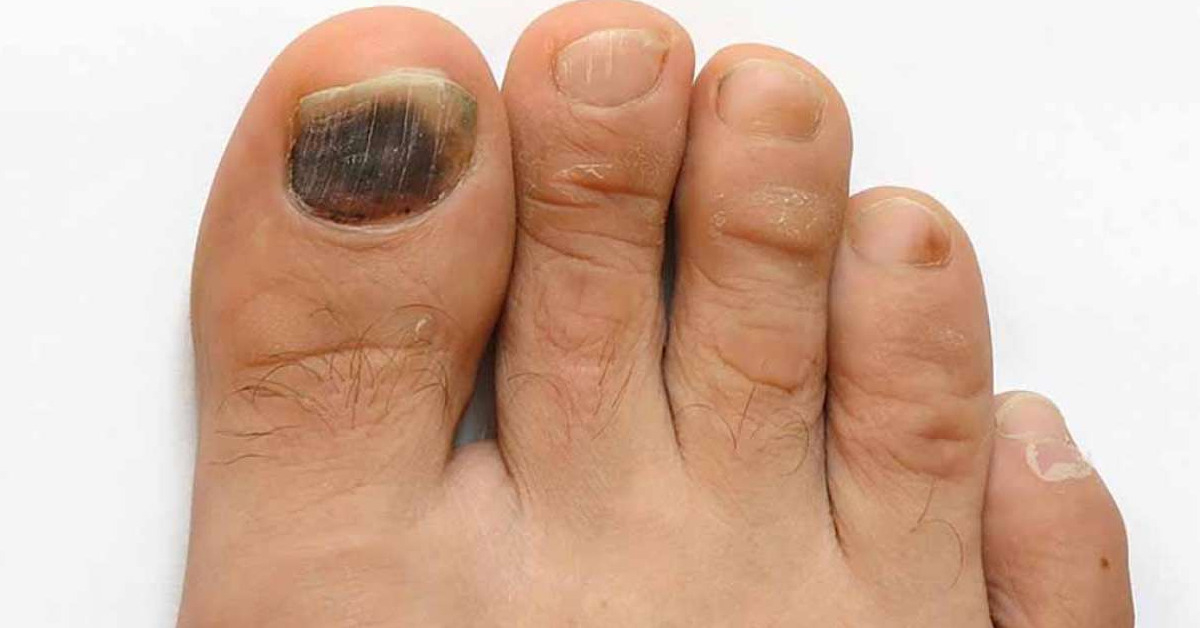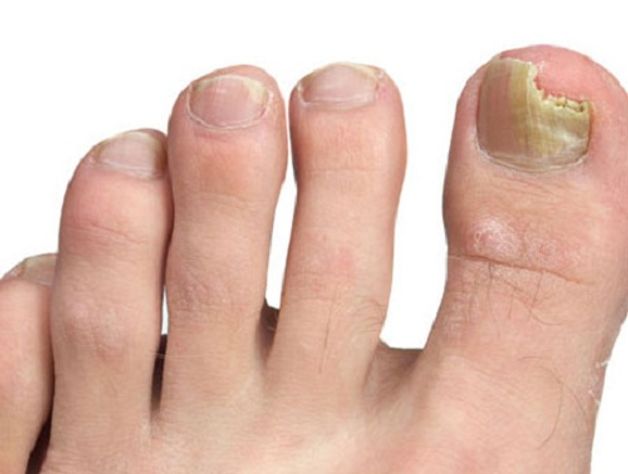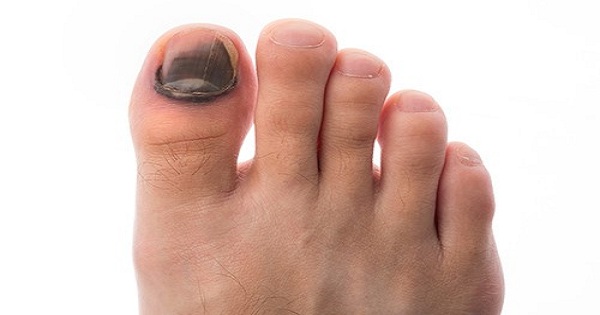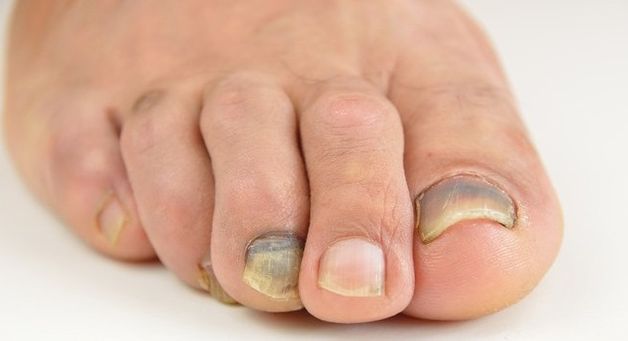
Toenail discoloration is a common problem. Possible causes of this symptom range from minor toe injuries to severe health conditions.
Toenails are usually semi-transparent, but they can sometimes become discolored, turning purple, black, green, or yellow, depending on the cause.

Several health conditions and other factors can cause toenail discoloration. Some require no treatment, but others may signal a serious condition that needs treatment from a doctor.
In this article, we look at the common causes of toenail discoloration. We also discuss treatment options and when to get advice from a doctor.

The health and appearance of the feet and toes can provide insight into someone’s overall health.
Conditions that may cause toenail discoloration include:
Nail fungus
Nail fungus is a common infection that is not usuallyTrusted Source painful unless it is severe. The medical term for nail fungus is onychomycosis, and it causes about 50% of nail diseases.
Nail fungus affects toenails more often than fingernails, with the infection typically developing on the big toe first.
Toenail fungus can often begin as a skin infection called athlete’s foot. It can also occur when other yeasts or molds get into the nail through cracks or breaks in the skin or nail.
Nail fungus affects up to 14% of people in North America. A study published in PLOS Pathogens found that toenail fungal infections are more likely to affect:
- older people — the prevalence is 18.2% in people aged 60–79 years compared with 0.7% in people younger than 19 years
- males than females, though the reasons for this difference are unclear
- people with poor peripheral circulation
- those who walk barefoot in shared bathrooms or locker rooms

Psoriasis
Psoriasis is a disorder that causes the body to make skin cells more quickly than they break down, which results in a patchy buildup on different parts of the skin.
According to the American Academy of Dermatology Association (AAD), people with psoriasis often develop nail psoriasis at some point in their lives, causing the nails to:
- change color
- get thicker
- lift off the nail bed
- crumble
- develop dents

Injury
Injuries can cause toenail discoloration. A red area will appear that turns purple over time and then brown or black. People may notice this after they stub their toes, wear tight shoes when running, or do anything else that causes small blood vessels to break and leak blood under the toenail.
Diabetes
People with diabetes are more vulnerable to fungal infections than the general population, so toenail discoloration can be a warning sign of the condition or a complication in someone with a confirmed diagnosis.
Poor circulation and reduced sensation in the feet often accompany diabetes. Due to this, people may injure their feet without being aware, creating opportunities for nail fungi to invade and flourish.

Melanoma
Melanoma is a severe form of skin cancer that can appear as a dark stripe running lengthwise down the toenail.
Learn more about melanoma here.
Yellow nail syndrome
Yellow nail syndrome is a rare disorder that can cause yellow toenails, breathing problems, and swelling in the legs.

Nail polish
Nail polish can also cause toenail discoloration if the polish penetrates deep into the keratin layers in the nail. The discolored nail eventually grows out, although it can take time.
Other causes
Illnesses affecting other parts of the body, such as lung disease, diabetes, and liver disease, can sometimes cause changes in nail color.
However, as the AAD point out, noticing such changes does not necessarily mean that an individual has a serious condition. Still, it could indicate that a visit to the doctor is in order.

Toenail discoloration may cause the nail to turn one of several different colors, including:
- white
- yellow
- brown
- green and black
- dark red and black
Other symptoms associated with toenail discoloration include:
- thickening nails
- nails that crack easily
- nails lifting off the skin
- pitting, which is the formation of little dents in the nail
- blood under the nails
- buildup of debris under the nails
The best treatment for toenail discoloration depends on its cause. However, no matter what causes it, treating discolored toenails always takes time because the nails grow slowly.
It is difficult to treat nail fungus, and relapses are common. ResearchTrusted Source has found that topical antifungals are not effective in treating nail fungus and that oral medications can cause liver damage as a side effect.
In a study involving 18 individuals who used Vicks VapoRub, an over-the-counter (OTC) mentholated ointment, to address their nail fungus:
- 83% reported a positive response to the treatment
- 55.6% showed a partial clearing
- 27.8% had no nail fungus after several months
- 16.7% saw no change
In people with nail fungus symptoms that are severe, disfigure the toenails, cause pain, and do not respond to other treatments, doctors may use nail debridement to reduce the thickness of the nails. Alternatively, they might carry out nonsurgical chemical nail removal.
Treatments for discolored nails in people with nail psoriasis include:
- topical applications that a person applies directly to the nails
- steroid injections near the nail
- laser therapy
- phototherapy
Most toe injuries heal with home treatments, such as OTC pain relievers and rest, ice, compression, and elevation (RICE). The body will usually absorb the pooled blood over time, and a healthy new toenail will grow out.

Toenail discoloration gets better without treatment if the toe has had a chance to heal from an injury. It is a good idea to see a doctor for evaluation and treatment if:
- a dark stripe running the length of the toenail appears or changes
- the nail is painful
- the area around the nail looks red or swollen and infected
- the nail itself is green and black and appears infected
- the nails are pitted
- there is bleeding around the affected nail
Toenail discoloration is a common problem with many possible causes, ranging from injuries to severe health conditions.
The most frequent reason for discolored toenails is nail fungus, which is challenging to treat but rarely a serious source of discomfort.
Aside from injuries, most conditions that cause toenails to change color may require treatment from a doctor.

















































